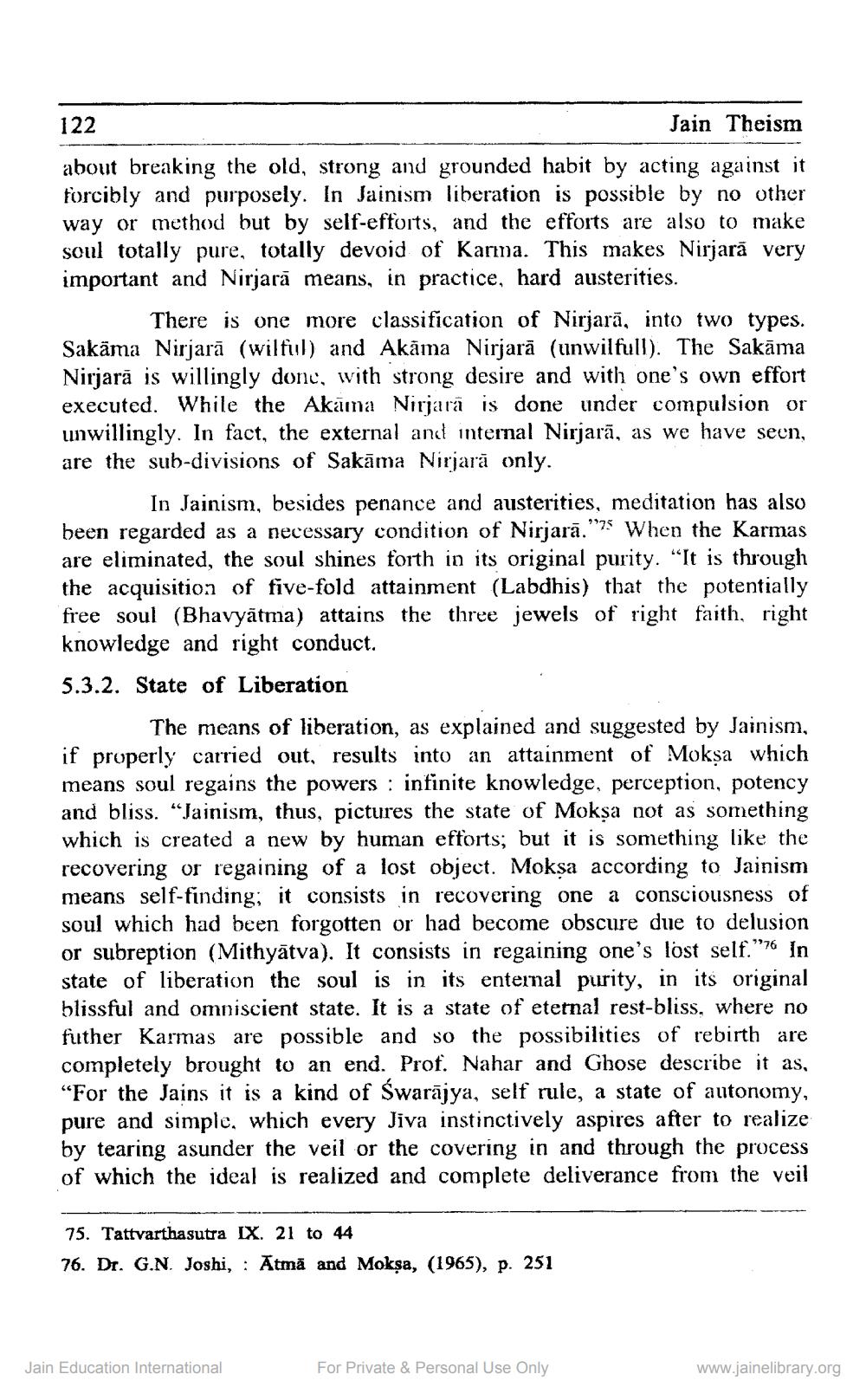________________
122
Jain
Theism
about breaking the old, strong and grounded habit by acting against it forcibly and purposely. In Jainism liberation is possible by no other way or method but by self-efforts, and the efforts are also to make soul totally pure, totally devoid of Karma. This makes Nirjarā very important and Nirjarā means, in practice, hard austerities.
There is one more classification of Nirjară, into two types. Sakāma Nirjarā (wilful) and Akáma Nirjarā (unwilfull). The Sakāma Nirjarā is willingly done, with strong desire and with one's own effort executed. While the Akama Nirjará is done under compulsion or unwillingly. In fact, the external and internal Nirjarā, as we have seen, are the sub-divisions of Sakāma Nirjară only.
In Jainism, besides penance and austerities, meditation has also been regarded as a necessary condition of Nirjarā."?When the Karmas are eliminated, the soul shines forth in its original purity. “It is through the acquisition of five-fold attainment (Labdhis) that the potentially free soul (Bhavyātma) attains the three jewels of right faith, right knowledge and right conduct. 5.3.2. State of Liberation
The means of liberation, as explained and suggested by Jainism, if properly carried out, results into an attainment of Moksa which means soul regains the powers : infinite knowledge, perception, potency and bliss. “Jainism, thus, pictures the state of Moksa not as something which is created a new by human efforts; but it is something like the recovering or regaining of a lost object. Moksa according to Jainism means self-finding; it consists in recovering one a consciousness of soul which had been forgotten or had become obscure due to delusion or subreption (Mithyātva). It consists in regaining one's lost self.”76 in state of liberation the soul is in its enternal purity, in its original blissful and omniscient state. It is a state of eternal rest-bliss, where no futher Karmas are possible and so the possibilities of rebirth are completely brought to an end. Prof. Nahar and Ghose describe it as, “For the Jains it is a kind of Swarājya, self rule, a state of autonomy,
e and simple, which every Jiva instinctively aspires after to realize by tearing asunder the veil or the covering in and through the process of which the ideal is realized and complete deliverance from the veil
75. Tattvarthasutra LX. 21 to 44 76. Dr. G.N. Joshi, : Atma and Moksa, (1965), p. 251
Jain Education International
For Private & Personal Use Only
www.jainelibrary.org




